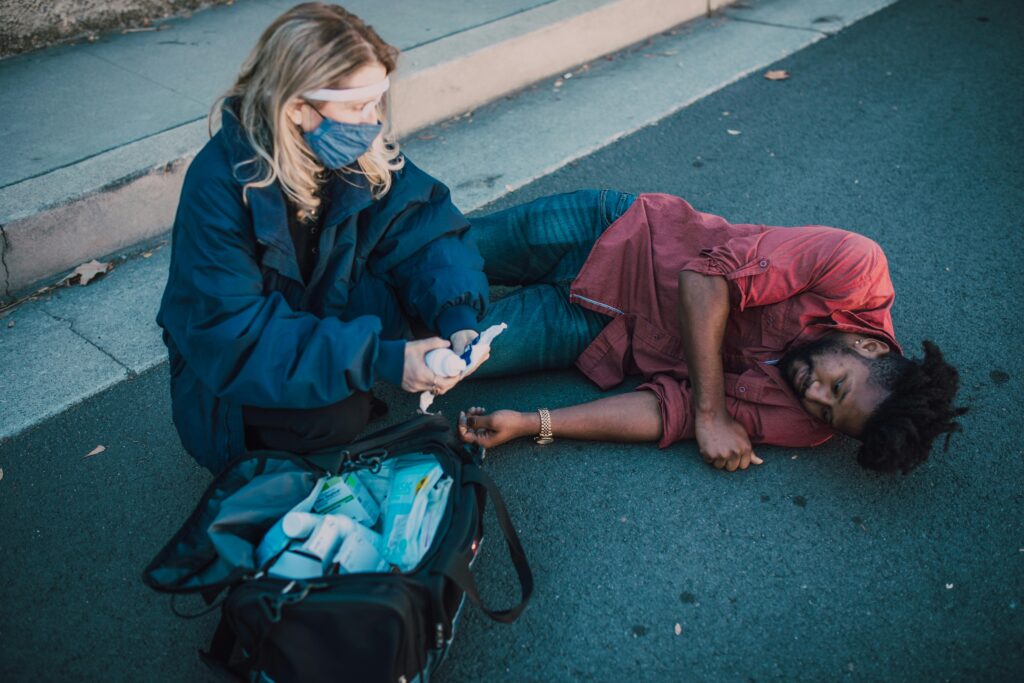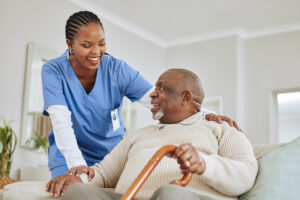Accidents and emergencies can happen anytime, anywhere, and having basic first aid knowledge can make a significant difference in providing immediate assistance and potentially saving lives. While professional medical help should always be sought for serious injuries or conditions, here are five simple first aid techniques that everyone should know:
1. CPR (Cardiopulmonary Resuscitation)
CPR is a lifesaving technique used to revive someone whose breathing or heartbeat has stopped. Here’s a simplified version of CPR for adults:
- Check for responsiveness: Shake the person gently and ask loudly, “Are you okay?” If there’s no response, proceed to the next steps.
- Call for help: Instruct someone to call emergency services (or do it yourself if alone).
- Open the airway: Tilt the person’s head back and lift the chin to open the airway.
- Check for breathing: Look, listen, and feel for breathing. If the person isn’t breathing or only gasping, start CPR.
- Perform chest compressions: Place the heel of one hand on the center of the person’s chest (between the nipples) and the other hand on top. Push down firmly and quickly at a rate of about 100-120 compressions per minute.
- Give rescue breaths: If comfortable, give two rescue breaths after every 30 compressions. Pinch the person’s nose, cover their mouth with yours, and blow until you see their chest rise. Repeat.
2. Heimlich Maneuver
The Heimlich maneuver is used to dislodge an obstruction from a choking person’s airway. Here’s how to perform it:
- Stand behind the choking person: Wrap your arms around their waist.
- Make a fist: Place your fist slightly above the person’s navel.
- Grasp your fist with your other hand: Press into the person’s abdomen with a quick upward thrust. Repeat until the object is dislodged or the person loses consciousness.
- If the person loses consciousness: Lower them to the ground and begin CPR.
3. Treating Minor Cuts and Scrapes
For minor cuts and scrapes, follow these simple steps to clean and dress the wound:
- Wash your hands: Before touching the wound, wash your hands thoroughly with soap and water.
- Clean the wound: Rinse the wound with cool water to remove dirt and debris. Avoid using hydrogen peroxide or alcohol, as they can damage tissue.
- Apply pressure: If the wound is bleeding, apply gentle pressure with a clean cloth or bandage until the bleeding stops.
- Apply an antiseptic ointment: Once the wound is clean and dry, apply a thin layer of antiseptic ointment to help prevent infection.
- Cover the wound: Cover the wound with a sterile adhesive bandage or gauze pad and secure it with medical tape.
4. Treating Burns
For minor burns, follow these steps to provide immediate relief and prevent further damage:
- Cool the burn: Hold the burned area under cool (not cold) running water for 10-15 minutes to soothe the pain and reduce swelling.
- Remove tight clothing or jewelry: If the burn is on an arm or leg, remove any tight clothing or jewelry before swelling occurs.
- Apply aloe vera gel or lotion: Once the burn has cooled, apply aloe vera gel or lotion to soothe the skin and promote healing.
- Cover the burn: Cover the burn with a sterile gauze bandage to protect it from infection.
5. Recognizing and Treating Shock
Shock is a life-threatening condition that occurs when the body’s organs and tissues don’t receive enough oxygen and nutrients. Common signs of shock include rapid breathing, rapid pulse, pale or clammy skin, and confusion. If you suspect someone is in shock, take the following steps:
- Call for help: Dial emergency services immediately.
- Keep the person lying down: Elevate their legs slightly unless they have a head, neck, back, or leg injury.
- Cover the person with a blanket: Keep them warm, but avoid overheating.
- Monitor their vital signs: Check their breathing, pulse, and level of consciousness regularly until help arrives.
Conclusion:
While these first aid techniques are simple, they can be incredibly effective in providing immediate assistance in emergencies. However, it’s essential to remember that first aid is not a substitute for professional medical care. Always seek medical attention for serious injuries or conditions, and consider taking a first aid and CPR course to enhance your skills and confidence in responding to emergencies. By being prepared and knowledgeable, you can make a difference in someone’s life when it matters most.





